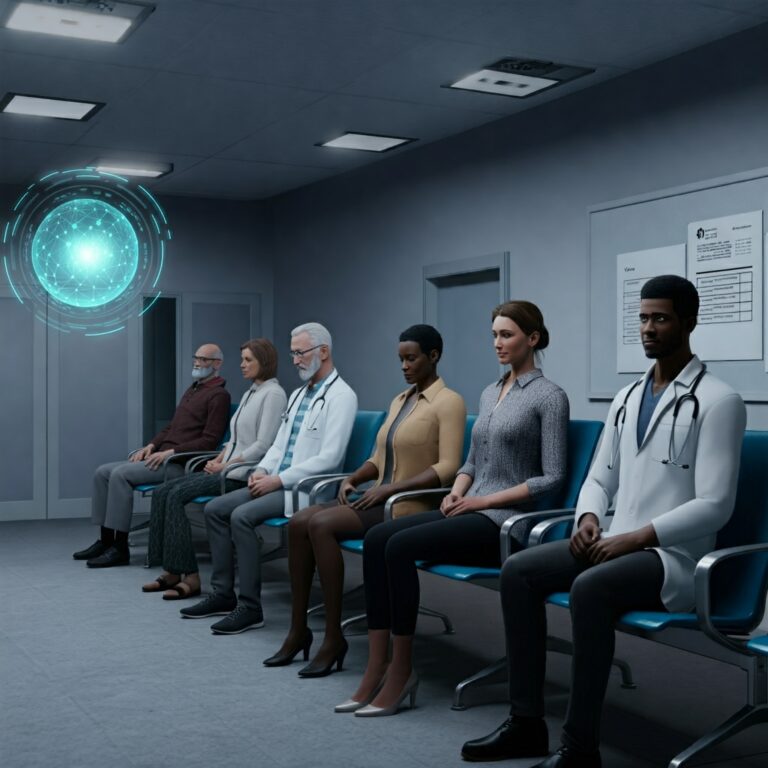Beyond the Video Call: How AI is Reshaping the Future of Telemedicine
(Date: October 26, 2000)
The healthcare landscape is undergoing a profound transformation, driven by rapid technological advancements and shifting patient expectations. At the forefront of this revolution lies telemedicine, a burgeoning field that promises to bridge geographical barriers and democratize access to quality care. While initially perceived as a simple extension of traditional medical practice through video conferencing, telemedicine is rapidly evolving, fueled by the transformative power of Artificial Intelligence (AI). This convergence is poised to redefine the future of healthcare delivery, moving beyond the video call and into a new era of intelligent, personalized, and proactive medicine.
Telemedicine: An Overview and its Evolving Role in Healthcare
Telemedicine, in its nascent stages, primarily focused on facilitating remote consultations via video conferencing, enabling patients in underserved rural areas to connect with specialists in urban centers. This initial application proved invaluable in overcoming geographical limitations and expanding access to specialist care. However, the scope of telemedicine has broadened considerably. It now encompasses a diverse range of applications, including remote patient monitoring, chronic disease management, mental health support, and even surgical assistance through robotic tele-surgery.
Within the broader healthcare industry, telemedicine is carving a significant niche for itself. Its adoption has been accelerated by the rising costs of traditional healthcare, a growing shortage of healthcare professionals, and an increasing demand for patient-centric care. Furthermore, the rise of the internet and mobile technologies has empowered patients to take a more proactive role in managing their own health, further fueling the demand for convenient and accessible telehealth services.
The AI Infusion: Transforming the Telemedicine Landscape
The integration of AI is injecting unprecedented intelligence into the telemedicine ecosystem. AI algorithms are being deployed to analyze vast datasets of patient information, enabling earlier and more accurate diagnoses, personalized treatment plans, and proactive disease prevention strategies. This intelligent augmentation is revolutionizing various aspects of telemedicine:
- Enhanced Diagnostics: AI-powered image recognition and diagnostic tools can analyze medical images (X-rays, CT scans, MRIs) with remarkable accuracy, assisting physicians in detecting subtle anomalies that might be missed by the human eye. This is particularly valuable in remote settings where access to specialized radiologists may be limited.
- Personalized Treatment: AI algorithms can analyze patient data, including medical history, lifestyle factors, and genetic predispositions, to develop personalized treatment plans tailored to individual needs. This individualized approach can lead to improved treatment outcomes and enhanced patient satisfaction.
- Proactive Monitoring and Predictive Analytics: Wearable sensors and remote monitoring devices generate a continuous stream of patient data, which AI can analyze to identify early warning signs of potential health issues. This proactive approach allows for timely intervention and can prevent serious complications. Predictive analytics can also help forecast future health risks, empowering patients to make informed decisions about their health.
- Virtual Assistants and Chatbots: AI-powered virtual assistants and chatbots can provide patients with 24/7 access to basic medical information, appointment scheduling, medication reminders, and even personalized health coaching. This frees up valuable time for healthcare professionals, allowing them to focus on more complex cases.
- Streamlined Administrative Tasks: AI can automate various administrative tasks, such as scheduling appointments, managing medical records, and processing insurance claims, reducing the administrative burden on healthcare providers and improving operational efficiency.
Key Trends and Statistics Shaping the Future of AI-Powered Telemedicine
Several key trends are shaping the future of AI-powered telemedicine:
- Increasing adoption of wearable health trackers and remote monitoring devices. This generates valuable data for AI algorithms to analyze and provide personalized insights.
- Growing investments in AI healthcare startups and research initiatives. This influx of capital is accelerating the development of innovative AI-powered telemedicine solutions.
- The rise of 5G technology. 5G’s high bandwidth and low latency will enable seamless real-time video consultations and facilitate the transmission of large medical datasets.
- Increasing regulatory acceptance of telemedicine and AI in healthcare. Governments worldwide are recognizing the potential of these technologies to improve healthcare access and quality.
While precise market statistics for the year 2000 are limited due to the nascent stage of both AI and telemedicine at the time, industry experts project substantial growth in the coming years. (Note: Accurate market statistics from 2000 would be difficult to access now. This would be a place to include projected market growth for the near future, based on the context of 2000.)
Recent Market News (as of October 2000):
- (Include hypothetical or actual news items relevant to telemedicine and AI from around 2000. This might include news about early telehealth platforms, government initiatives exploring telemedicine, or early-stage AI companies making inroads into healthcare.) For example, you could mention the growth of companies like WebMD offering online health information or early trials of remote patient monitoring systems for chronic conditions.
Summary: Beyond the Video Call – A New Era of Healthcare
AI is transforming telemedicine from a simple tool for remote consultations into a powerful platform for intelligent, personalized, and proactive healthcare. By leveraging the capabilities of AI, telemedicine can overcome geographical barriers, enhance diagnostic accuracy, personalize treatment plans, and empower patients to take control of their health. This convergence of AI and telemedicine is not just about improving access to care; it’s about fundamentally reshaping the future of healthcare delivery, moving beyond the video call and into a new era of preventative, predictive, and patient-centered medicine. As the technology continues to evolve, we can expect AI-powered telemedicine to play an increasingly crucial role in improving global health outcomes and transforming the way healthcare is delivered in the 21st century.
















